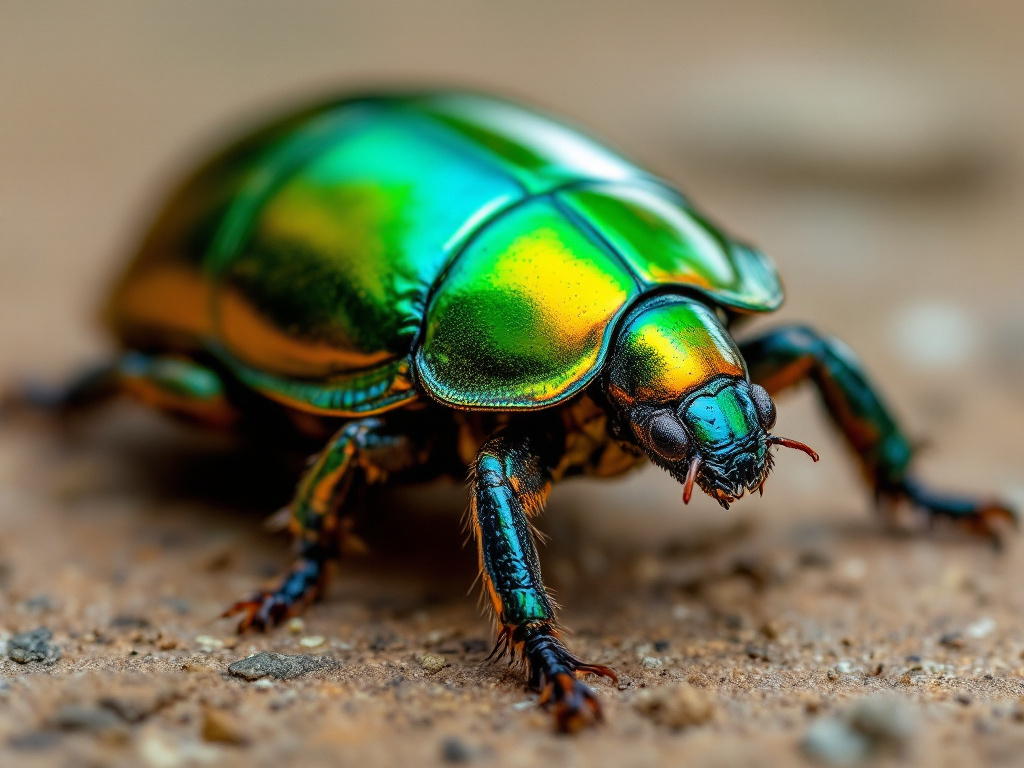Image generated by flux-ai.io & content generated by ChatGPT Version 4o-mini
The Clavate Tortoise Beetle: A Local Marvel in Putnam County
Residents of Putnam County, Florida, might not realize that our beautiful landscapes are home to a remarkable little creature known as the Clavate Tortoise Beetle, or Plagiometriona clavata. This shiny, dome-shaped beetle, typically measuring about the size of a small pea, is not just another insect; it plays a significant role in our local ecosystem, especially in relation to agriculture and gardening.
What Makes This Beetle Unique?
The Clavate Tortoise Beetle is easily recognized by its striking appearance. It can be shiny green, golden, or even a brownish hue, and its shell has a distinctive, rough texture. You might spot these beetles on plants in your garden or along our local roadsides. They are particularly attracted to members of the nightshade family, which includes common plants like tomatoes and eggplants—crops that many Putnam residents grow.
Why Should We Care?
Understanding the presence of the Clavate Tortoise Beetle is important for local farmers and gardeners. While some beetles can be pests, this species generally doesn’t cause significant harm to crops. In fact, they can help manage some unwanted plant species. This balance is crucial for maintaining healthy gardens and farms, which are vital parts of our community’s economy. In 2022, Putnam County’s agricultural products were valued at nearly $75 million, highlighting the importance of healthy and productive farming practices.
Local Habitat and Distribution
The Clavate Tortoise Beetle is found across various regions in the United States, including Florida. In our state, they have been recorded in several counties, including Lake, Alachua, and, notably, Putnam. Their presence suggests that our local environment is healthy enough to support diverse insect populations.
Beetle Lifecycle
The lifecycle of the Clavate Tortoise Beetle is quite fascinating. The adult beetles lay their eggs on the underside of leaves, where the larvae emerge and immediately start feeding on the plants. Interestingly, the larvae have a unique survival tactic: they carry around a “fecal fork” that allows them to attach dried waste to their backs, camouflaging themselves from predators. This clever tactic is similar to how some animals use mud or leaves for protection.
Implications for Agriculture and Horticulture
For those involved in agriculture or gardening in Putnam County, understanding the role of the Clavate Tortoise Beetle can inform pest management strategies. Since they primarily feed on specific plants, keeping an eye on their populations can help farmers anticipate crop health. This knowledge is especially relevant given the county’s focus on agriculture and horticulture development.
Conclusion
So, the next time you’re enjoying the beautiful outdoors around Putnam County—perhaps during a stroll, a visit to the farmers’ market, or while tending to your garden—take a moment to appreciate the Clavate Tortoise Beetle. This tiny, colorful insect is not just a part of our local biodiversity; it reflects the health of our environment and the importance of sustainable agriculture. By being aware of the creatures that share our space, we can all contribute to preserving the delicate balance of our local ecosystem.
References
EENY-392/IN710: Clavate Tortoise Beetle, Plagiometriona clavata (Fabricius) (Insecta: Coleoptera: Chrysomelidae). (n.d.). Ask IFAS – Powered by EDIS. https://edis.ifas.ufl.edu/publication/IN710

